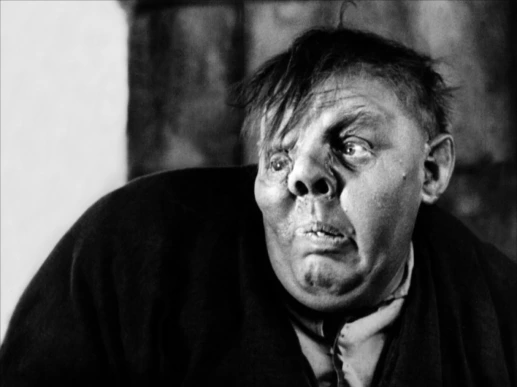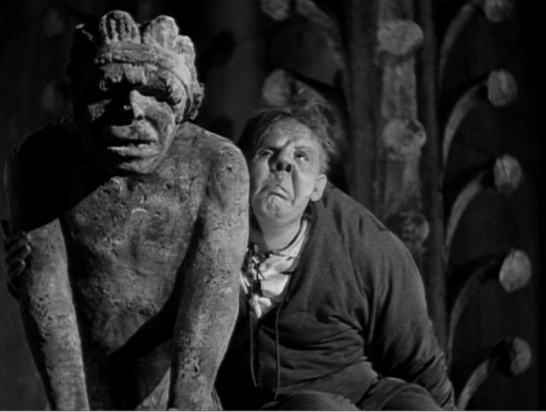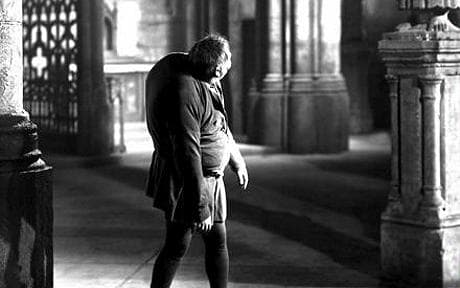
Victor Hugo has a flair for doom and gloom. Much of his writing centers around tragic characters. All Les Miserables aside, The Hunchback of Notre Dame is no exception.
No, I’m not talking about the Disney film. As dark as it was for a kids’ movie, some of the darkest parts were left to the book. Of all the tragic characters in the story, from gypsy orphans to melancholic priests, the most tragic one is very clearly Quasimodo.
Quasimodo is a character who suffers from being. Simply being. He is deformed and monstrous, almost unbearable to all eyes, except for his master Frollo, the archdeacon. People quiver and cringe when they see him. He is universally reviled as a beast, in spite of his humanity. And, as a result, he lives in solitude behind the walls of Notre Dame cathedral. The church is his sanctuary, hiding him away from the outside world.
Unlike other people Quasimodo has not spent his childhood in the company of humans. He was raised among gargoyles, bells, and stone walls. The only person to take pity on him is Archdeacon Claude Frollo, who in spite of this, treats him as no more than a dog or servant.

Throughout the book Quasimodo is compared to Notre Dame cathedral. Victor Hugo spends a lot of time illustrating the history of the church, as well as Paris itself. Notre Dame, he writes, is not so much a cathedral, but a motley artifact of lost time. it is made of layers built by history, starting from the Greco-Roman period to the Gothic era, and then to the Renaissance, where the story takes place. He illustrates each of these layers by architecture: as history continues, the form of the art itself becomes absent, as each layer supplants the other. One man doesn’t build an edifice; society does.
Quasimodo is much the same: society birthed and bred him into a hostile existence. Like the cathedral he is subject to time and erosion. His deformity represents Notre Dame: like the church he lives in, Quasimodo is built in layers of incongruity. His hunched back, warted face, and awkward gait are like pieces thrown haphazardly together. History, with its succeeding layers, had destroyed the harmony of the church. And so Quasimodo is destroyed as well.
Sometimes the most fascinating characters in literature are the tragic ones. They create a pathos for the human condition. Because they lack such basic things that we take for granted, we come to sympathize with them. In Quasimodo’s case, that missing piece is love. All his life the world has shunned him. Even when he falls in love with the gypsy Esmeralda, he cannot have her, because he is still a monster. The world will never see him for his heart, but rather his malformation. In that regard, he is trapped. The walls of Notre Dame double for the walls that separate him from the rest of humanity, even when he steps outside it.
The only love he finds is in the bell tower. And it’s almost a romantic love. Quasimodo fulfills that need by leaping atop them, caressing, and even talking to them. Some reviews of the book compare it to a sexual relationship. Victor Hugo calls it a “marriage”. But the “marriage” comes with its toll: the loud noise of the bells cripples his hearing and makes his deaf. The only way he can communicate is through looks and gestures.
And the book does not end happily. Yes, Quasimodo is able to break free of his submission to Frollo. When he witnesses him laughing at Esmeralda’s execution, Quasimodo throws him from the balustrade. But he is still broken by the death of the gypsy and goes to find her tomb. Once Quasimodo leaves, the “marriage” is broken, and the bells ring silent. But, in the death a new “marriage” begins. When the tomb is opened later, his skeleton is found with its arms around the body of Esmeralda. Both bodies crumble when someone tries to separate them.

What I loved about Quasimodo is the complexity (as basic and simple as that sounds). At first he seems almost primitive, like a brooding beast in the bell tower. But Hugo takes us into the mind and sufferings of the beast. He unravels what other people refuse to. At times Quasimodo has damned himself. He accepts his lot in life, even coming to hate those who persecute him. But that inborn desire to “live” never escapes him. In that way he is more human than everyone else.
No, he doesn’t become the hero the city deserves. There’s no happy parade at the end, with Quasimodo being lifted through the streets victoriously. Hugo isn’t Disney, after all; he’s Shakespeare. Happy endings take a back seat to death and tragedy. As a matter of fact, the only character who meets a somewhat happy ending in the book is the one who least deserves it: scumbag Phoebus. If you want to know the difference between book and movie there, look it up.
There’s something very classic, though, about the “less-than-human” character striving towards humanity. By society’s standard, Quasimodo is certainly less than human. But even the darkest elements can’t kill his spirit, or stop it from seeking. Through tragedy we see the strength of his essence as a character. And the necessity.
